SL-BUS Wiring Harness
Introduction
What is SL-BUS Wiring Harness?
This document explains complete information about SL-BUS Wiring Harness.
SL-BUS Wired Interface
SL-BUS communication standard is well designed for a robust wired connectivity in a noisy electrical installations . When wired connectivity nee to be installed, there are lot of factors to be considered like- noise, bus resistance, bus capacitance, length of the bus, cost of the bus and so on. SL-BUS physical interface is specially designed to take care of all these challenges. Further we have enhanced it’s electrical parameters for betterment in SL-BUS Wired interface. SL-BUS wired interface is compatible with IEC62386-101 standards.
Typical Wiring for SL-BUS island
Typical wiring of a SL-BUS island is as shown below. This type of wiring has several issues like -it is difficult to exchange the device, the open wire ends may cause safety risks, more rework time on demo/test setup time, prone to error and wrong connection due to human mistakes.
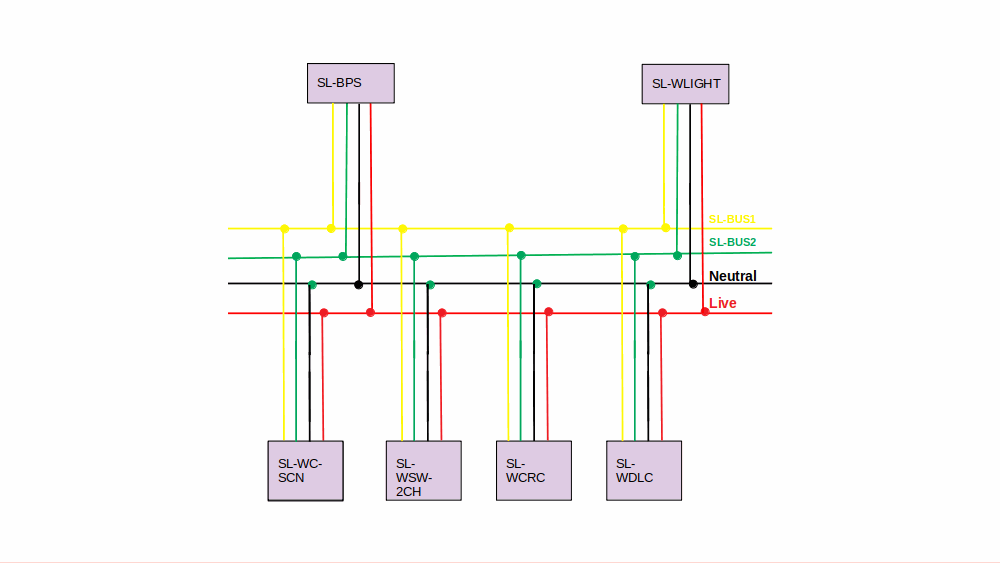
Recommended Wiring Harness of SL-BUS island
It is strongly recommended to use suggested SL-BUS Wiring Harness as shown below for your test or demo setup needs. Using this wiring harness for your installation is also good practice provided the space and requirement meets it.
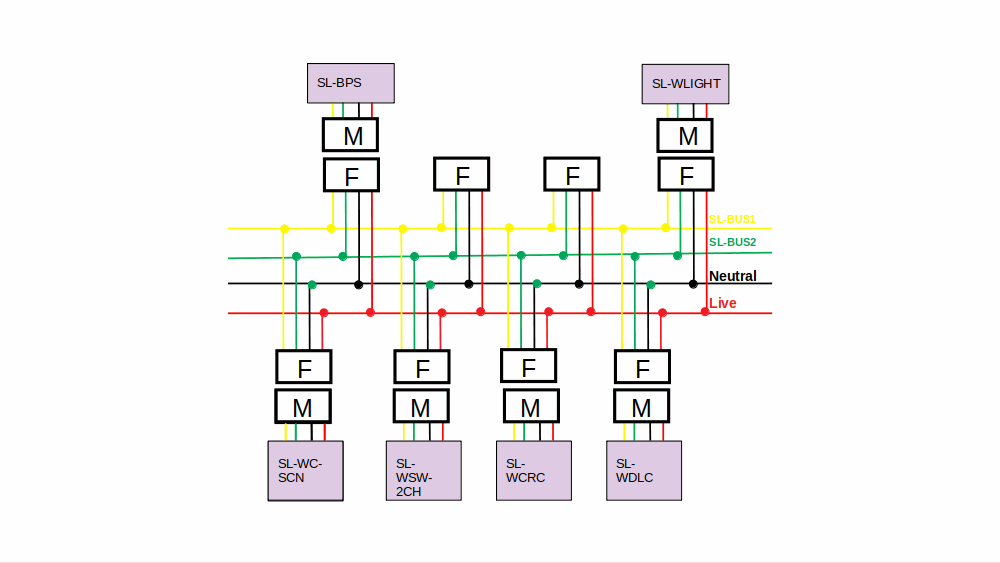
SL-BUS Wiring Connector Specifications
Pin Description
Follow the pin configuration shown in the image, make sure you use the same color of wire for the suggested pin number. This configuration is valid for male as well as female connectors
Generally all female connectors creates the installation island that supplies mainly power and bus communication to the devices.
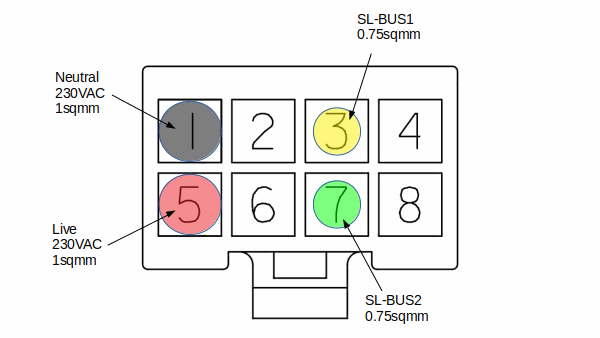 
 SL-BUS Wiring Harness Connector (Male)
This type of male connector is used to interface with the device with the electrical wiring. The device under test or installation must be connected to this male connector. Depending upon the type of device, there could be two, four or eight wire interface to this connector.
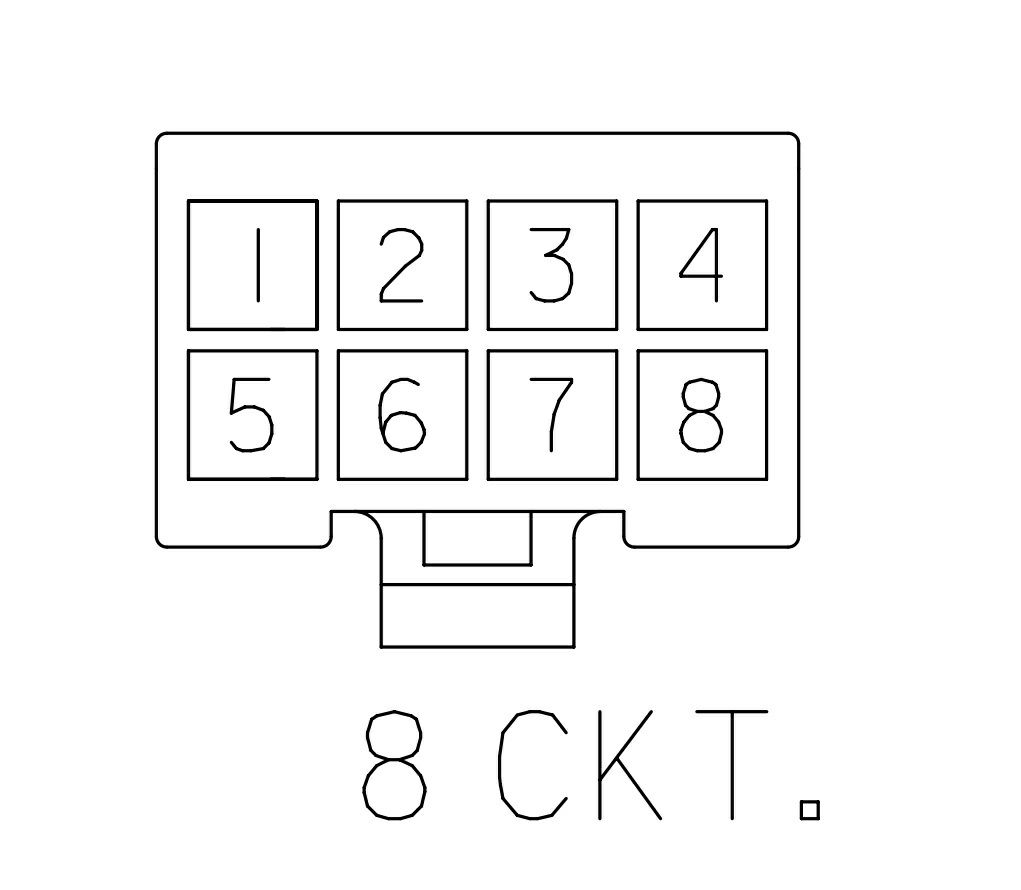
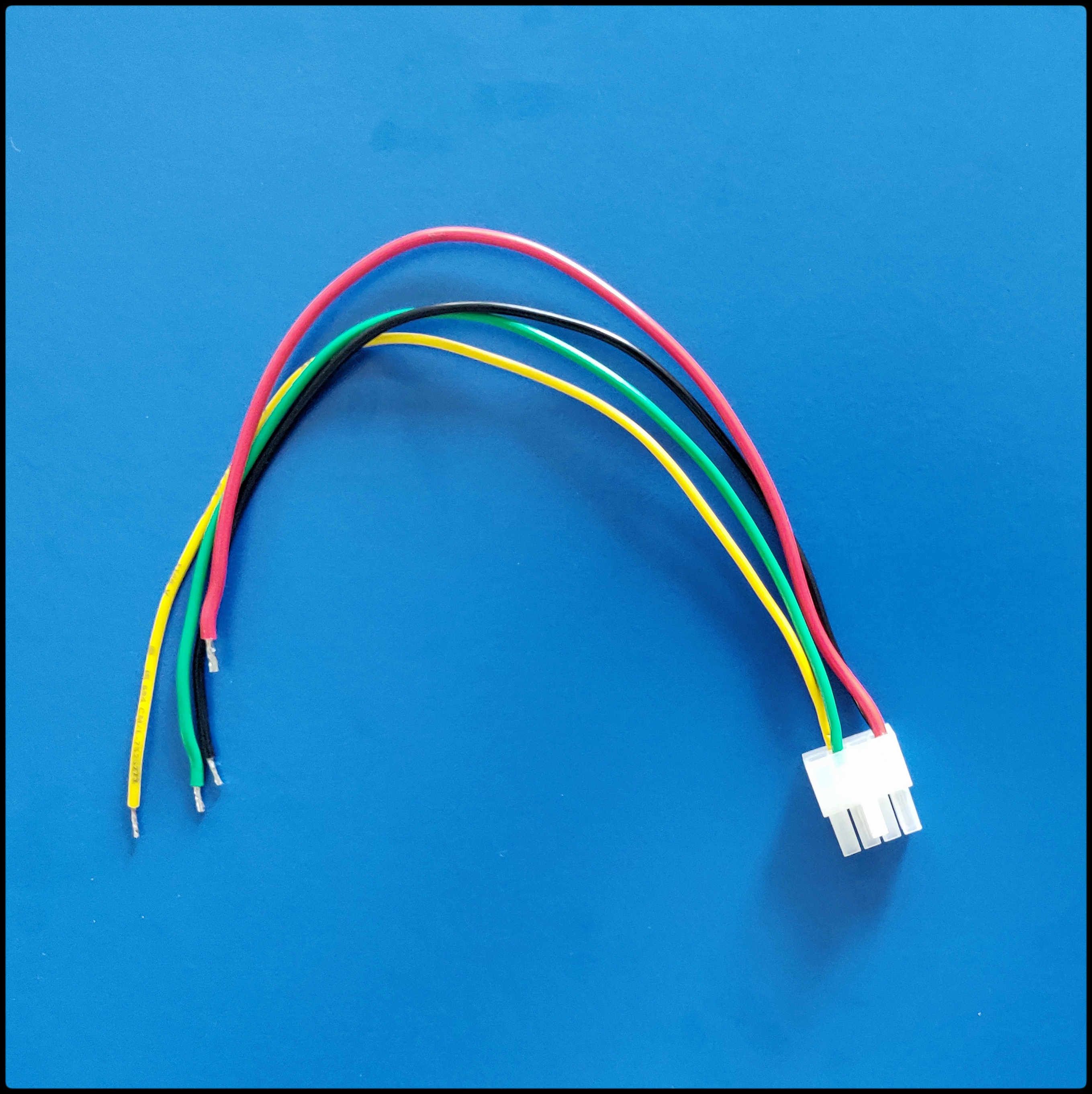
Getting SL-BUS Wiring Harness Connectors
You can order them online through our online eCommerce portal if you are an active customer with us with access rights for online shopping activities.
If you wish to create it yourself, follow the process explained below.
SL-BUS Wiring Harness Connector (Female)
This type of female connector is used to interface with the network side electrical wiring. The installed wiring or the internal wiring of demo setup must use this connector. Typically this connector has 4 pin connections most of the time, if you wish to connect load through the connector interface then there will be 8 pin connections. 
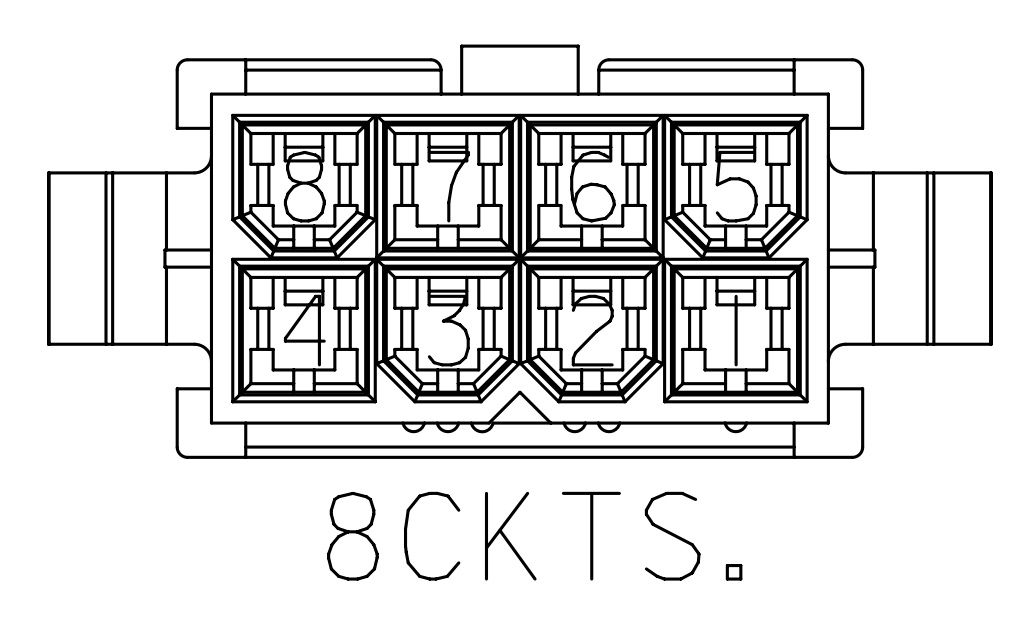
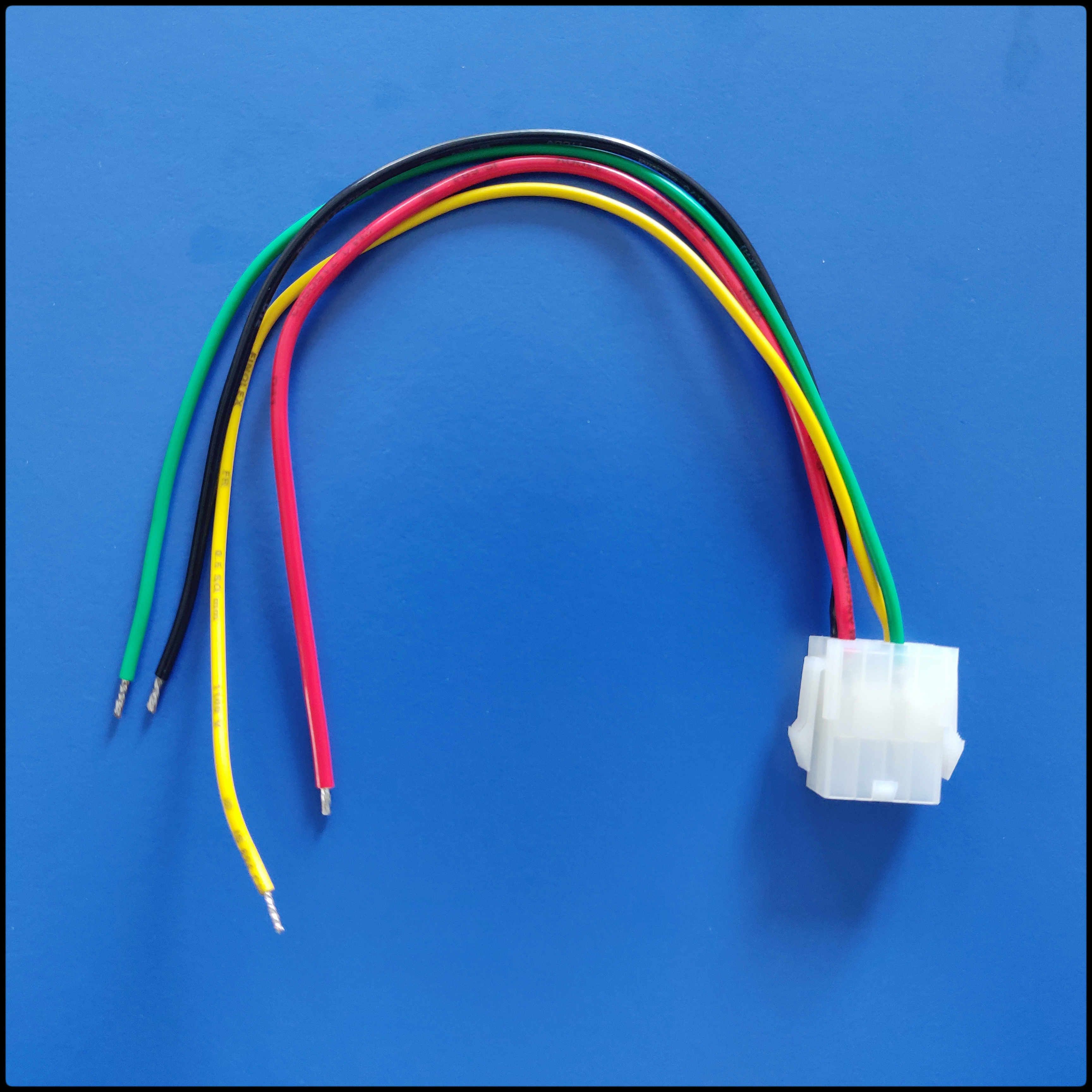
Getting SL-BUS Wiring Harness Connectors
You can order it online through our online eCommerce portal if you are an active customer with us with access rights for online shopping activities.
If you wish to create it yourself, follow the process explained below.
Creating SL-BUS Wiring Harness Connectors
Collect the tools, raw material and follow the process to make this connected harness yourself.
Connector
Wire to Wire Power Lock Connectors Assembly
There are two types of connectors - a) Female Housing + Crimps and b) Male Housing + Crimps. All these four components are needed to create this connector harness. The quantity of this raw material may vary as per your need. You can order these from your known sources. The reference link is provided below.
Connector Parts References:
Crimp Terminal and Housing Connectors (Wire-Wire)
Female Connector Housing
Crimp Male Terminal to be inserted on Female Housing
Male Connector Housing
Crimp Female Terminal to be inserted in Male Housing

Tools
Soldering Gun
Good quality soldering gun to tin the wire before crimping.
Wire Stripper
Good quality wire stripper to strip and cut the wires
Crimping Tool
Good quality crimping tool if not possible crimping can done with the help of nose plier also
Wires
Red Colored 1 Sq. mm Wire
Multi stand wire in red color for LIVE electrical power connection.
Black Colored 1 Sq. mm Wire
Multi stand wire in black color for NUTRAL electrical power connection.
Yellow Colored 0.75 Sq. mm Wire
Multi stand wire in yellow color for SL_BUS1 wired communication signal connection.
Green Colored 0.75 Sq. mm Wire
Multi stand wire in green color for SL_BUS2 wired communication signal connection.
Assembly Process
Once you are ready with needed raw material and tools, follow the simple step-by-step process below to create SL-BUS Wiring Harness Connectors yourself.
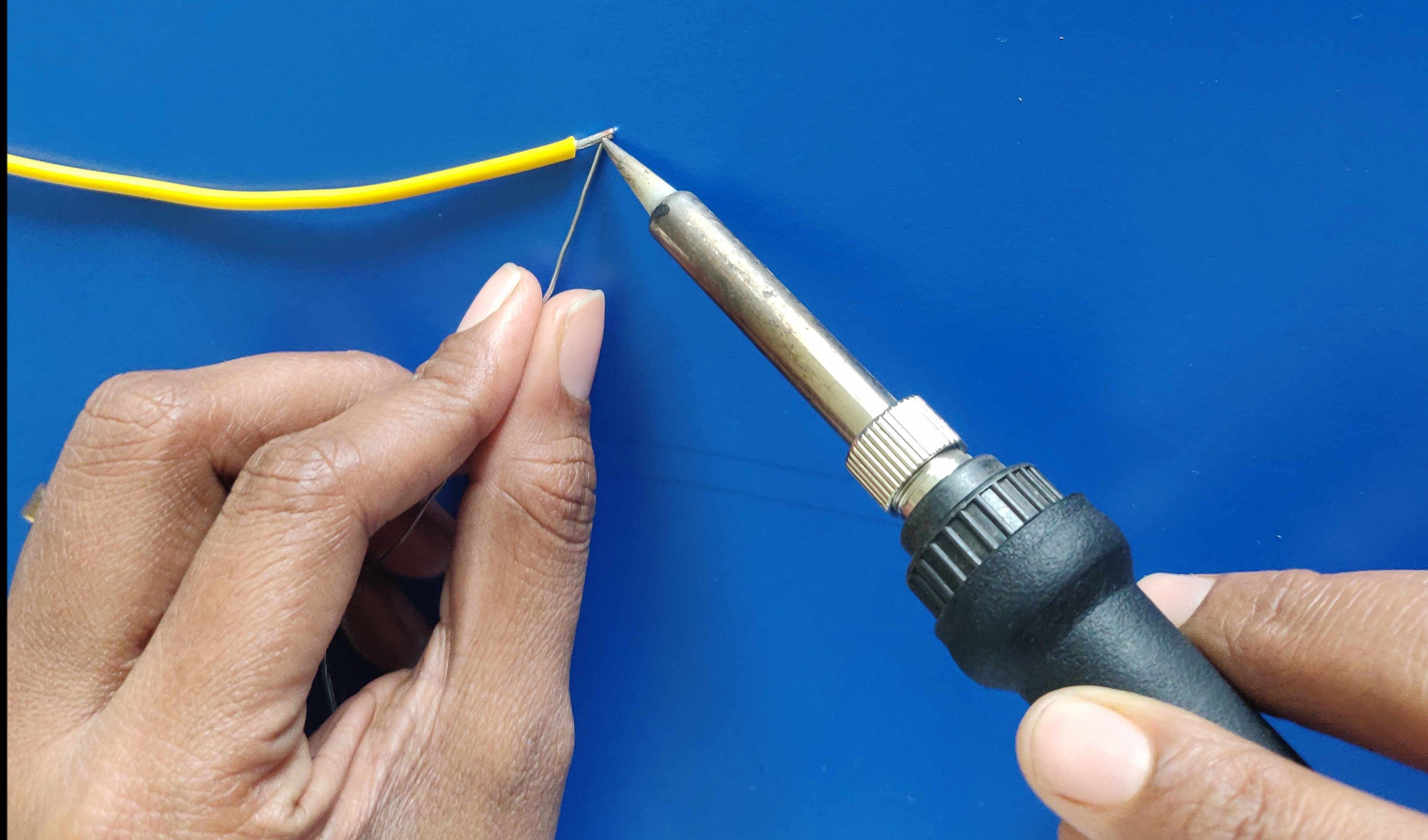
1. Tin the pin
Strip the wire (Approx 5 mm tip length recommended), twist and tin the copper leads using soldering gun. It strengthens the copper's natural properties, making it better equipped to resist humidity & high temperatures.
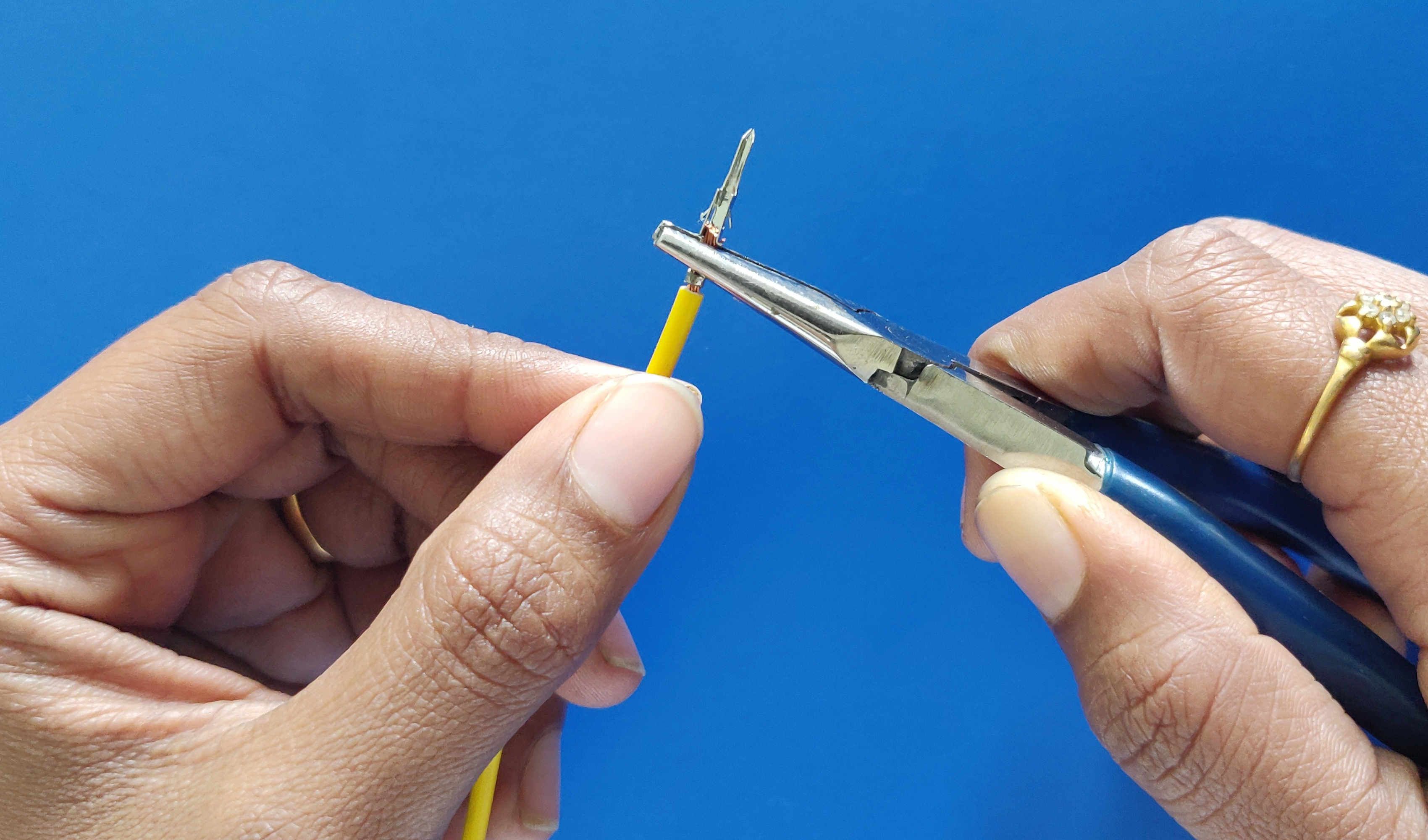
2. Crimp the pin
Place the tinned wire inside the metal fitting and crimp it with the crimping tool, and ensure that it is perfectly seated inside. Remove the crimp tool, and inspect the wire. You can use Crimping Tool if you have otherwise you can use Nose Pliers for this process.
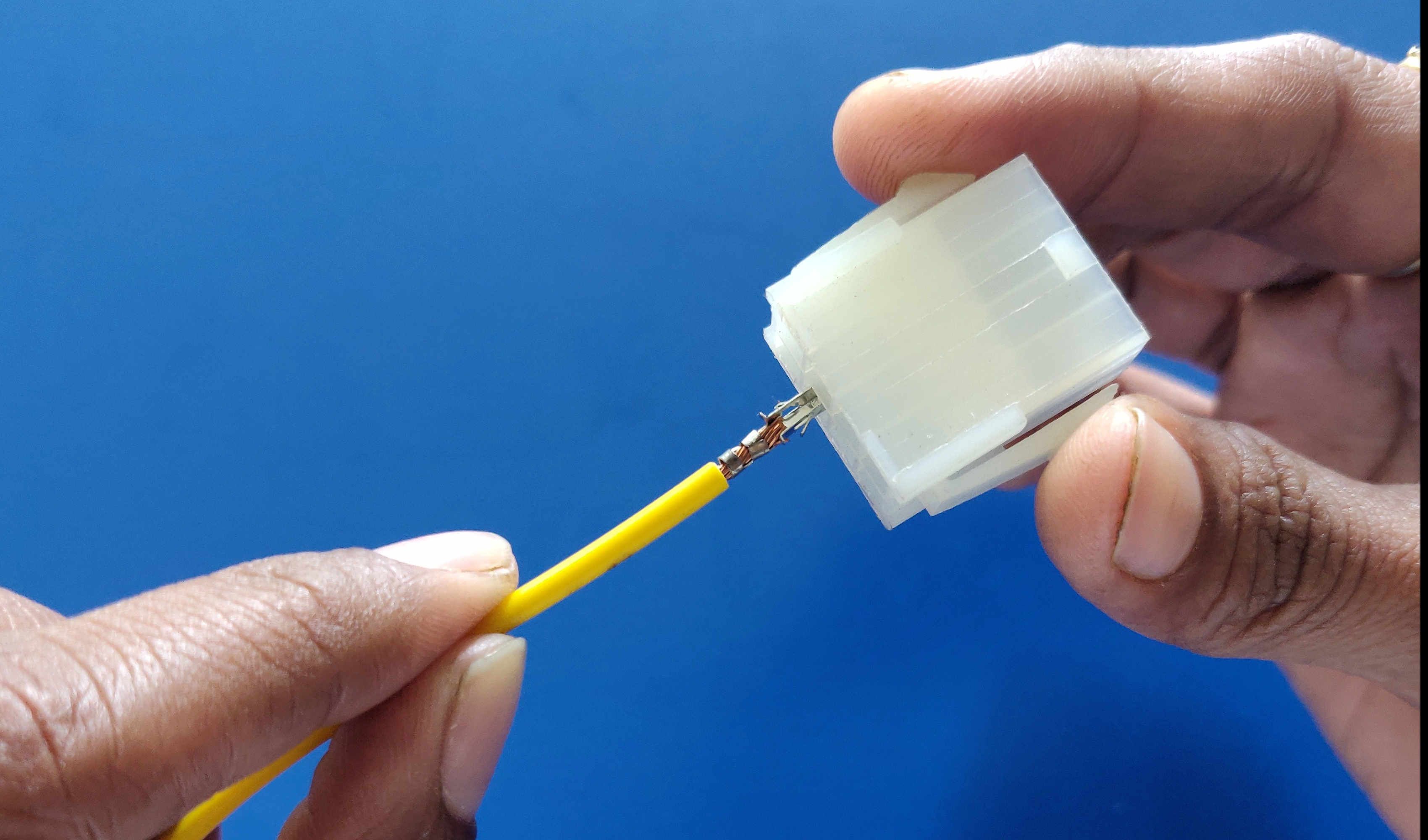
3. Insert the pin
Now you have to insert crimped wire in to plastic casing. Make sure after that metal socket is properly locked in plastic casing and has no open wire part outside the plastic casing.
SL-BUS Community Support:
If you need any support or have any question/doubt about this documentation, if you wish to interact with us about this topic; then please use our support forum channel. We recommend you to browse through the discussion first, may be - your doubt or query is already answered. Otherwise you are most welcomed to ask your question about this documentation.
